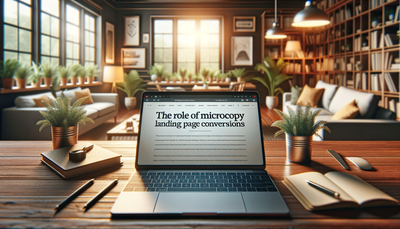Unveiling the Common Attributes of Successful Company Logos
The right logo can be a powerful tool that instantly communicates an organization's values to the public. Understanding the common features and attributes of good logos can jumpstart the logo design process and make the logo truly stand out.This article examines the key features of effective company logos, including:
- Color
- Shape
- Font selection
- Design elements
Table of Contents:

Choosing The Right Colors
Overall, successful company logos have one common factor: the ability to instantly convey the organization's message and values. This involves having both a strong visual design and thoughtful color selection.Appropriate colors can be critical when designing a logo, as it is the primary way to convey emotions, attract attention, and distinguish the organization from its competitors.
Studies have found that color affects a person's emotions, mood, and even purchasing decision. Companies that select colors based on those behaviors are more likely to be successful in creating logos that capture their audience.
Do you need a website? Want to build a website but don't know where to start? Our website builder is the perfect solution. Easy to use, and with the ability to customize to fit your business needs, you can have a professional website in no time.
Exploring Appropriate Shapes
The shape of a logo must be as carefully considered as its color and fonts. Serious, straightforward companies often favor geometric shapes, while brands with a lighter, playful appeal can try incorporating curvilinear elements.Complex and overlapping shapes can create synergy amongst the logo's elements, while symmetry can help the logo look balanced and professional.
The shapes must also be relevant to the brand's purpose, as an ill-suited shape can undermine the logo's impact and usefulness. Beyond that, using simplified shapes will help make the logo more memorable, and ensure that its message is instantly visible.
As noted in the last paragraph, color adds context to the logo, and when paired with the appropriate shape, it can create a powerful statement.
Incorporating Text and Fonts
Once the logo's shape has been selected and the colors have been chosen, it is important to identify which type of font best conveys the message you want your logo to communicate. Fonts have the ability to evoke a certain emotion, and so selecting an appropriate font with carefully chosen text is essential in ensuring that your logo conveys the desired message.The font can also modify the logo shape, making the logo appear more sophisticated and complex. Moreover, when combined with a meaningful phrase, the font and text can truly become a defining part of the logo, helping it to stand out.
When considering text and font, let creativity be your guide as you work to create an iconic identity for your organization.
Building a website with SITE123 is easy
Encapsulating Brand Attributes
The last paragraph discussed the importance of text in logo design by outlining what to look for when selecting a font style.The design of a logo is not only about the text it comprises - it is important to consider the shape and colors that are used to encapsulate the brand attributes:
The shape, texture, and sizes of the elements in the logo should complement each other and create an air of cohesion, and the choice of colors should tap into the company’s personality and goals.
By carefully and thoughtfully choosing the correct colors and shapes for a logo, a company can increase their public recognition and trustworthiness.
Adding Visual Cues
In addition to encapsulating brand attributes, a successful company logo should also include visual cues to help customers and audiences easily form an association with a brand. Visual cues can help distinguish a logo from its competitors and make it as memorable as possible.These visual cues can include colors, shapes, fonts, and other graphical elements, depending on the context and type of logo.
Ultimately, the goal of visual cues is to create an easily recognizable and distinguishable logo for the company.
Using Negative Space Effectively
In addition to the visual cues mentioned in the last paragraph, effective company logos have utilized the art of negative space to evoke the desired message and increase the impact the logo has.Negative space is the open, usually uncolored space between shapes, figures and letters.
When used judiciously, negative space can be very effective in creating strikingly simple designs that effectively capture an organization's characteristics and goals.
Therefore, incorporating negative space into a logo can be a powerful tool for conveying the brand's message quickly and effectively.
Consider Meaningful Illustrations
The use of illustrations can also help strengthen a company logo's message. An illustrative element allows designers to express a desired emotion or concept that can be difficult to convey solely through written words.Additionally, including an artistic illustration with strong brand colours and fonts can prove to be a powerful combination.
When selecting an illustrative element to include in a logo, it's important to ensure that the meaning behind the illustration is meaningful, sincere, and relatable to the company and its values. Doing so helps to ensure that the company is properly represented as a knowledgeable and trustworthy brand.
Follow Modern Design Principles
The modern world has seen a shift in the preference of design features, and understanding these principles can be valuable when creating a logo.Following clear and clean, minimalistic designs rather than overly complex ones, can provide the company logo with a timeless quality to last for years to come.
Applying modern design principles can also create a sense of confidence and security, securing the strength of an organization's brand in the public's mind.
Additionally, using a high-quality format for the logo such as vector format will ensure a clear, consistent appearance.
This will help the logo to remain aesthetically pleasing and crystal clear no matter where it is displayed, from promotional materials to social media accounts.
Combined with meaningful and impactful illustrations, these design principles can create an effective company logo that will last.





